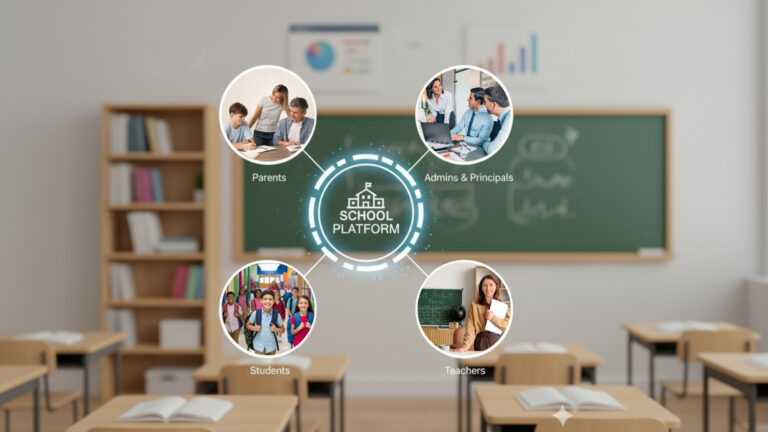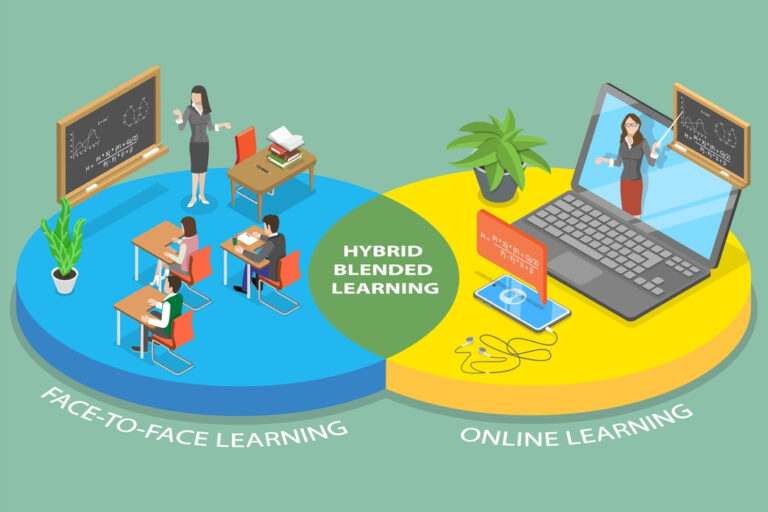What if the way we’ve always taught doesn’t work anymore, not because it’s wrong, but because today’s students are learning in completely different ways?
We’re teaching a generation that grew up with iPads instead of puzzles and video tutorials instead of chalkboards. Generation Alpha, kids born from 2010 to 2025, are the first true digital natives. They’ve never known a world without smartphones, smart TVs, or instant answers from Google.
So, the big question for school leaders is:
Is your school equipped to engage, teach, and prepare Generation Alpha for a fast-evolving future?
Let’s explore how technology shapes Gen Alpha’s learning style and how forward-thinking schools can transform their educational approach to stay relevant and impactful.
Gen Alpha in the Classroom: Teaching the First Fully Digital Generation
Let’s get one thing clear: Gen Alpha doesn’t “use” technology, they live in it.
They swipe before they speak. They watch before they read. They explore ideas through YouTube, games, and AI tools before anyone explains them. This generation is used to fast responses, interactive experiences, and having choices.
That changes how they learn.
Long lectures and paper worksheets? That might have worked before, but it doesn’t match how Gen Alpha’s brain is wired. They prefer:
- Quick, visual content that’s easy to digest
- Immediate feedback (just like in a game)
- Personal choice and freedom to explore topics their way
If your school still relies on traditional methods alone, you may be losing their interest. They’re not less motivated, they’re just learning differently.
What does this mean for educators? It means we need to rethink our approach. Learning has to feel active, connected, and personal. The good news is that technology, when used effectively, can help make that happen.
From Information to Skills: Preparing Students for the Real World
As the world shifts toward a skills-driven economy, today’s classrooms need to do more than just deliver information. They must prepare students to think critically, adapt quickly, and solve real problems, and that’s where both skills-based learning and project-based learning come in.
Education today must go beyond delivering facts. Schools need to develop adaptable, skilled individuals who can thrive in a skills-based, innovation-driven economy.
Skills-Based Learning
This approach focuses on helping students develop essential 21st-century skills, like
- Critical thinking
- Problem-solving
- Creativity
- Collaboration
- Digital literacy
It’s not just about what students know, but what they can do with that knowledge. Whether it’s improving their communication skills through peer discussions or analyzing data during a science experiment, students are evaluated on competencies, not just content recall.
Project-Based Learning
Project-based learning is one of the most effective ways to deliver those skills. It puts students in the driver’s seat, encouraging them to explore real-world problems, ask meaningful questions, and present their own solutions. Projects often combine subjects, like math, language, and science, in hands-on experiences that feel relevant and exciting.
Together, skills-based and project-based learning create a powerful formula: one sets the target, the other provides the path. When used with the right tools, they turn classrooms into launchpads for future-ready learners.
The world Gen Alpha is heading into doesn’t just value knowledge. It values skills. Skills like:
The Role of Educational Technology: More Than Just Digital Tools
Technology can and should do more than automate school operations. It can redefine the entire learning experience.
Students don’t connect with screens just because they’re digital; they connect when content feels relevant, active, and personal. That’s why interactive platforms, collaborative tools, and gamified learning systems are reshaping what a classroom can look like. They invite students to build, explore, and create, not just consume.
Technology, when used with purpose, can:
- Spark creativity through interactive, gamified content.
- Build student confidence with personalized learning paths.
- Offer real-time feedback and track growth academically and emotionally.
- Reduce teacher workload by simplifying administrative tasks.
- Strengthen communication between school and parents, instantly and transparently.
It’s no longer about having the most advanced devices or the latest features. It’s about choosing tools that support learning outcomes, empower teachers, and engage today’s students in ways that matter.
Let’s stop thinking of edtech as just a background system and start using it as a bridge that brings learning to life.
How to Choose the Right Educational Technology Tool
When selecting an education platform, ask:
- Does it align with your school’s learning objectives?
- Is it easy for teachers, students, and parents to use?
- Does it support both skills-based and project-based learning?
- Can it provide smart analytics and real-time insights?
- Does it integrate well with other tools, or even better, is it all-in-one?
- Is there ongoing support and training for your staff?
Yes, Change Is Hard, But Staying the Same Is Riskier
Let’s be honest. Changing the way we teach isn’t always easy.
Schools face real challenges:
- Limited budgets
- Teachers feeling overwhelmed
- Parents who are unsure about new methods
- Resistance to change from traditional systems
But forward-thinking schools are finding ways to move ahead. And they’re not doing it with flashy gadgets, they’re doing it with clear goals and smart systems.
They invest in teacher training, not just new tools. They make time for collaboration and creativity. They choose platforms that support learning, not distract from it. Most importantly, they create a culture that’s open to growth.
The Future Belongs to Flexible Schools
The most successful schools are those that adapt in teaching methods, curriculum design, technology use, and how they define success.
We’re not just teaching content anymore; we’re teaching learners how to adapt, collaborate, and grow. What worked ten years ago may not work today. And what works today might not be enough tomorrow.
Are you ready to shift?
Ask yourself:
- Are we giving teachers the support they need to innovate?
- Are we designing classrooms that spark curiosity?
- Are we creating space for student voice and choice?
The most successful schools in the coming years won’t be the ones with the most devices, they’ll be the ones with the most human-centered design, where tech supports real learning and real growth.
Skoolix: Your Partner in Shaping the Future of Education
If your school is ready to embrace this shift, Skoolix gives you the tools to make it happen with simplicity, insight, and impact.
With Skoolix, you can:
- Design skills-based learning journeys that support how Gen Alpha learns
- Track academic, behavioral, and emotional growth, so you’re supporting the whole child
- Connect with parents in real time, making communication easier and more effective
- Support teachers with smart tools that save time and reduce admin stress
- Get continuous support from a team that understands your mission
Skoolix is more than just a system; it’s a smarter way to manage school life, support your team, and create meaningful learning experiences.
All-in-one. Future-focused. Built for today’s learners.
Ready to reimagine learning for the next generation? Let’s do it together.





